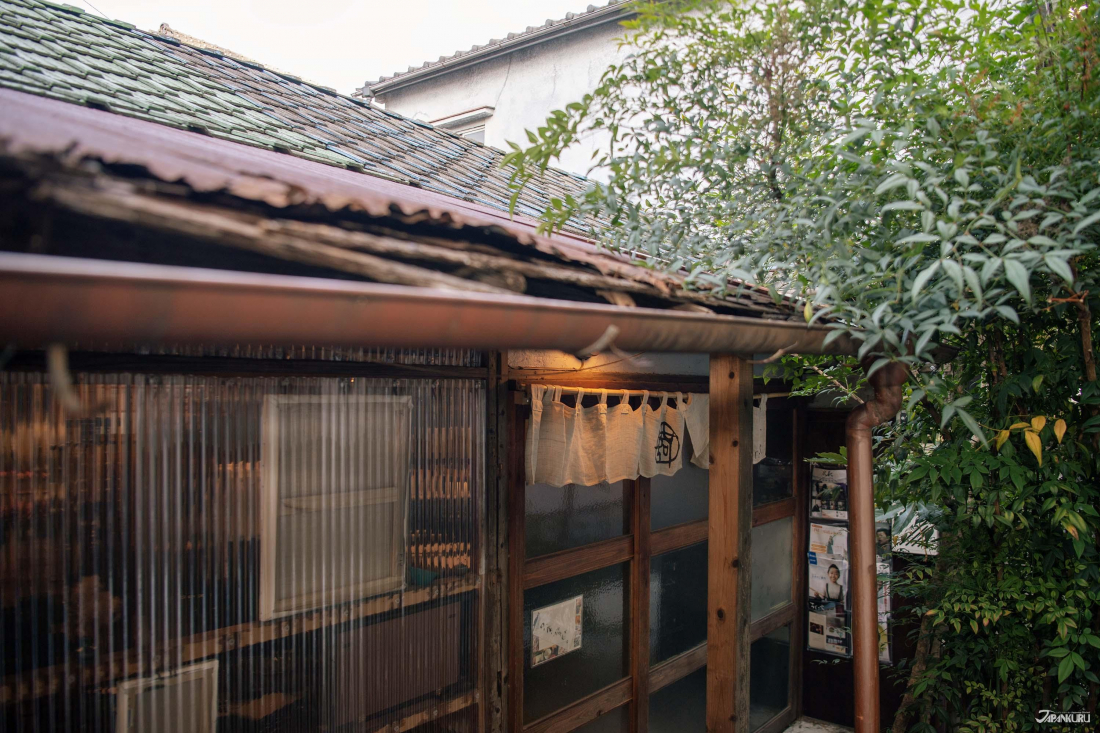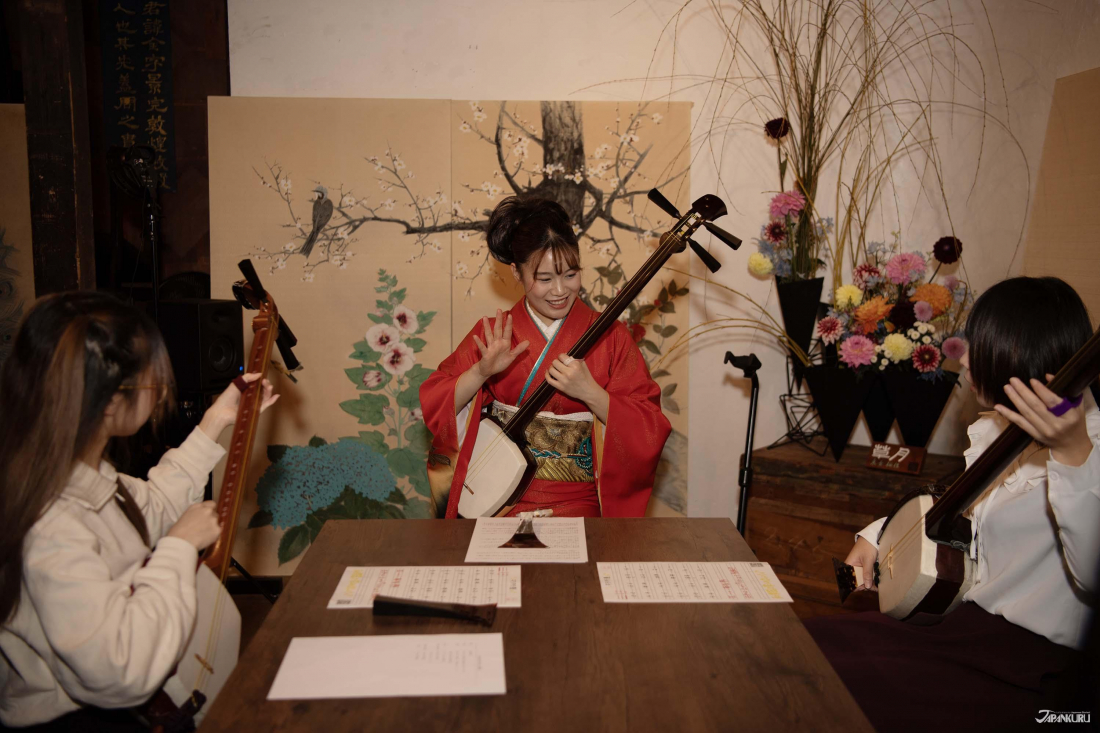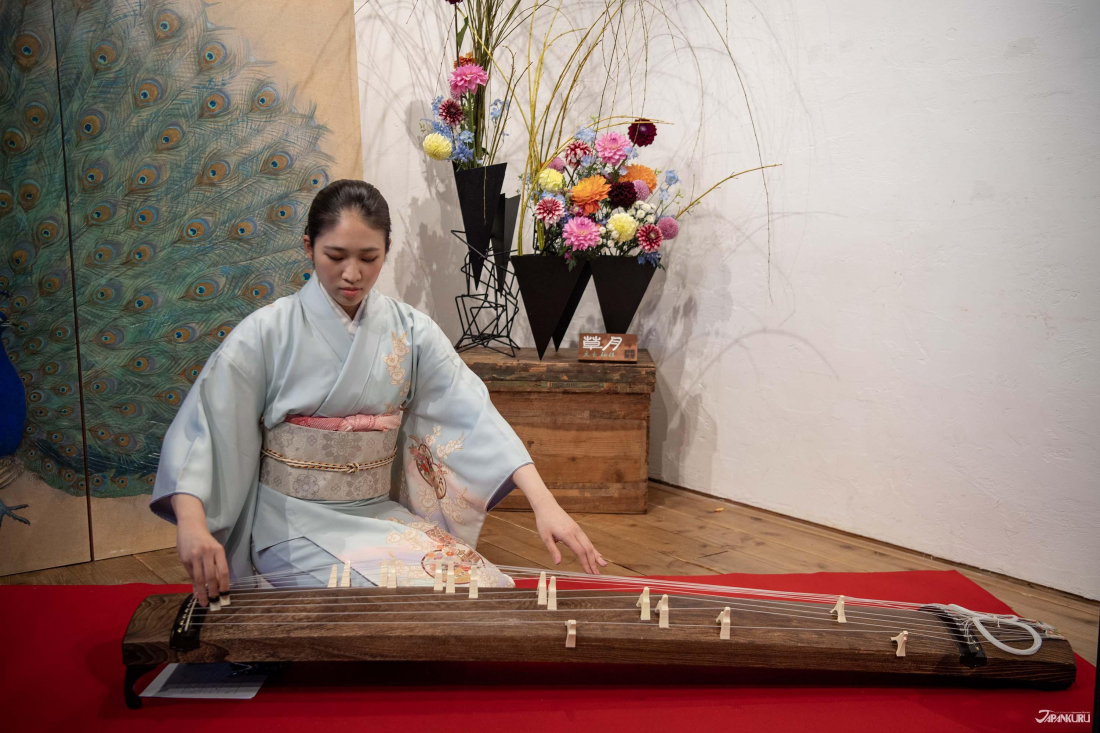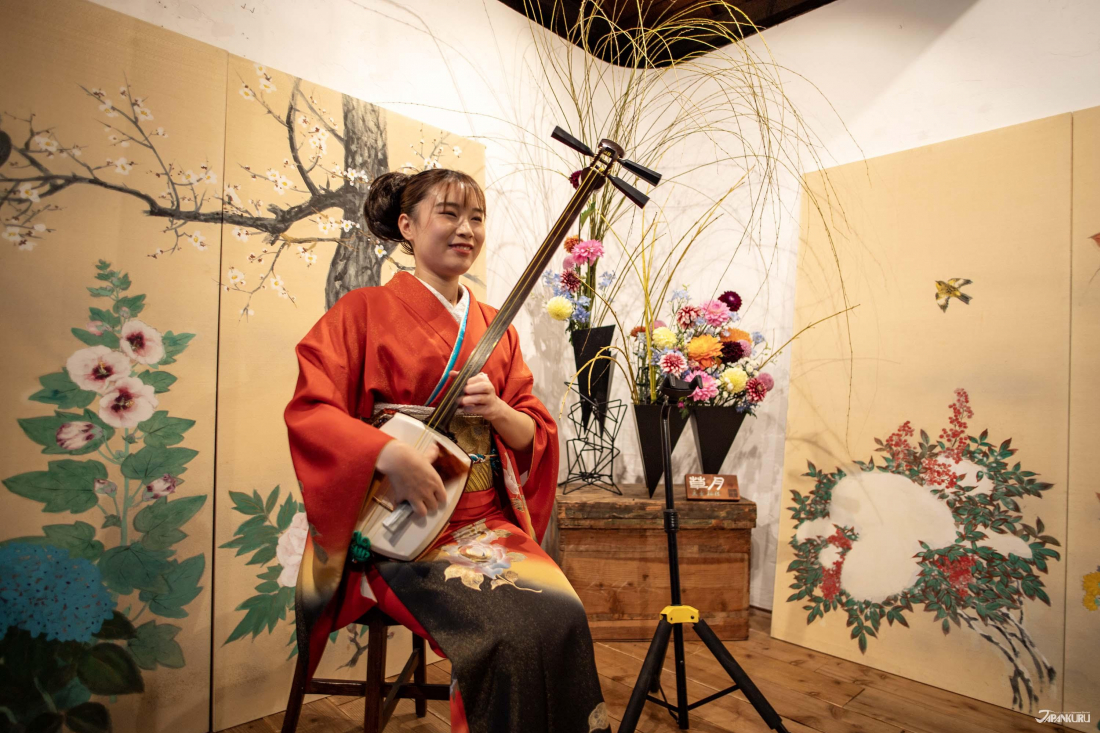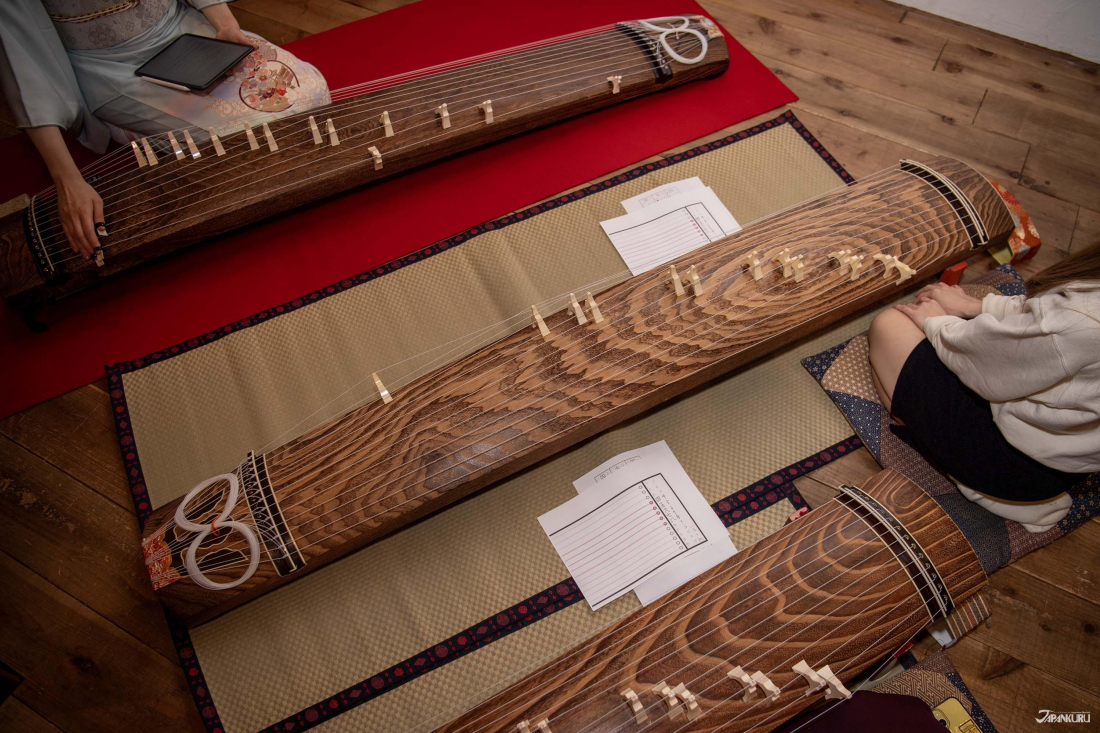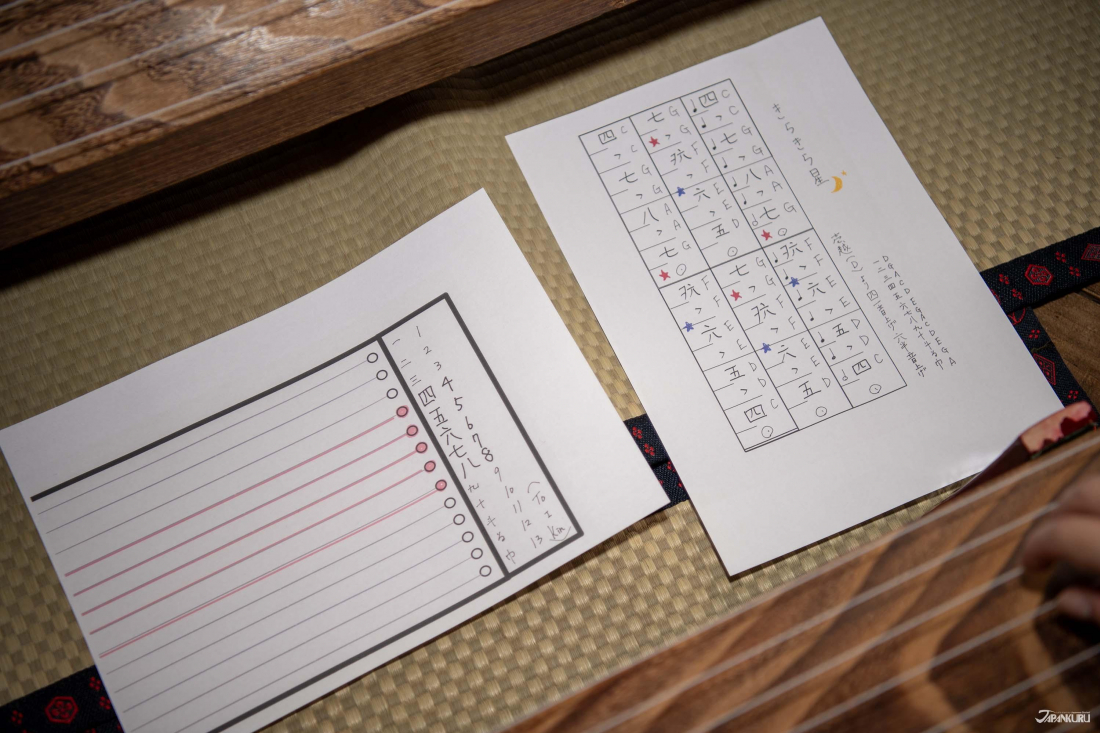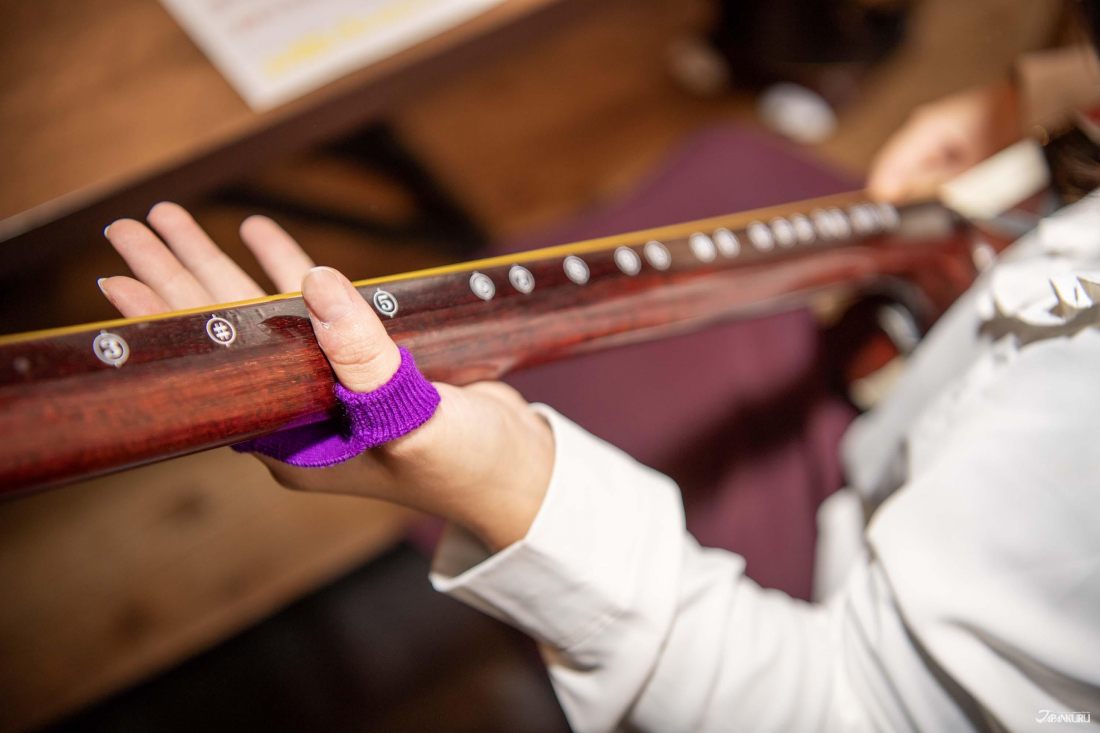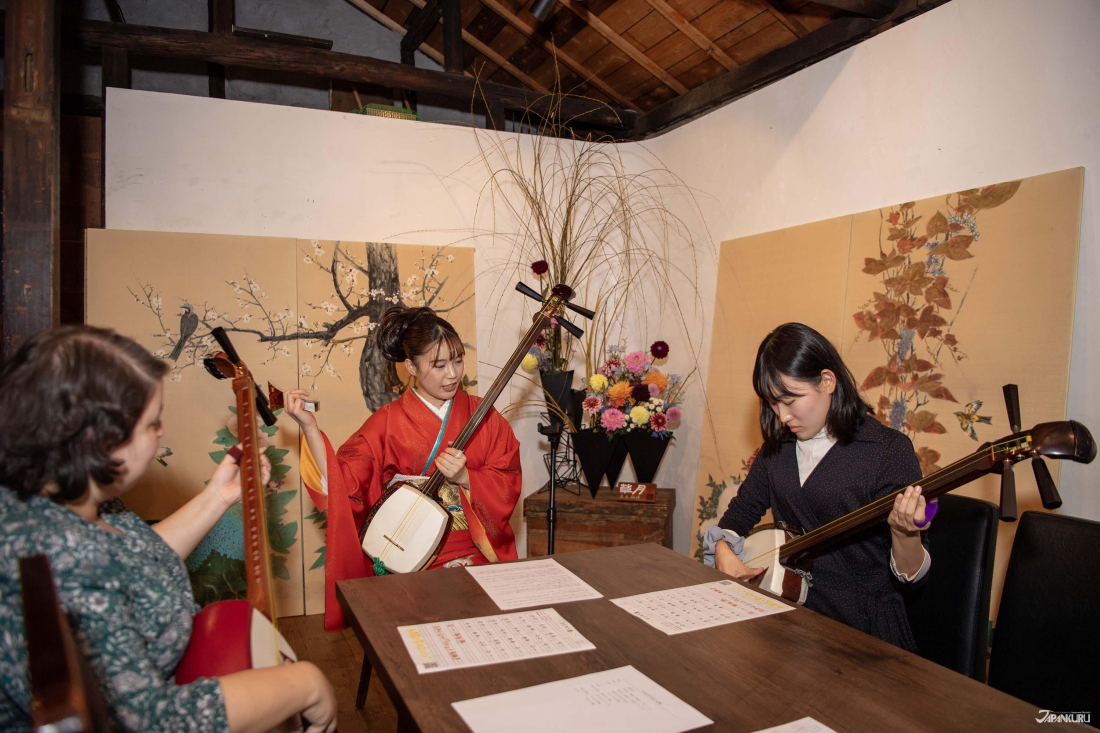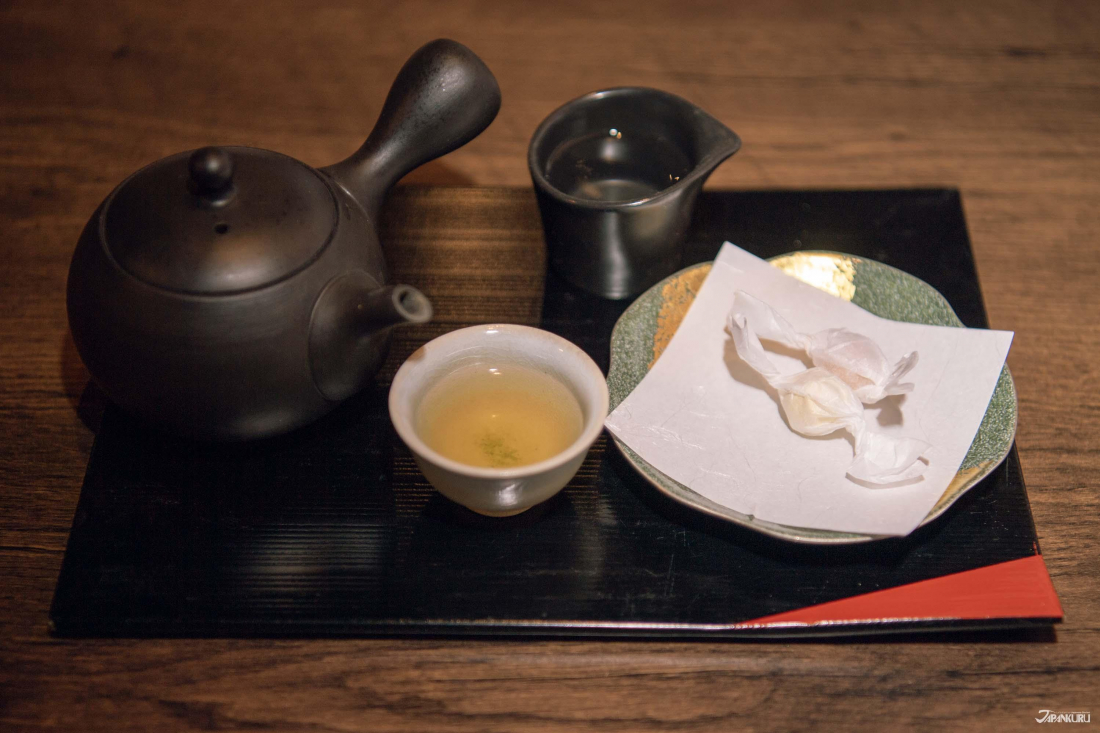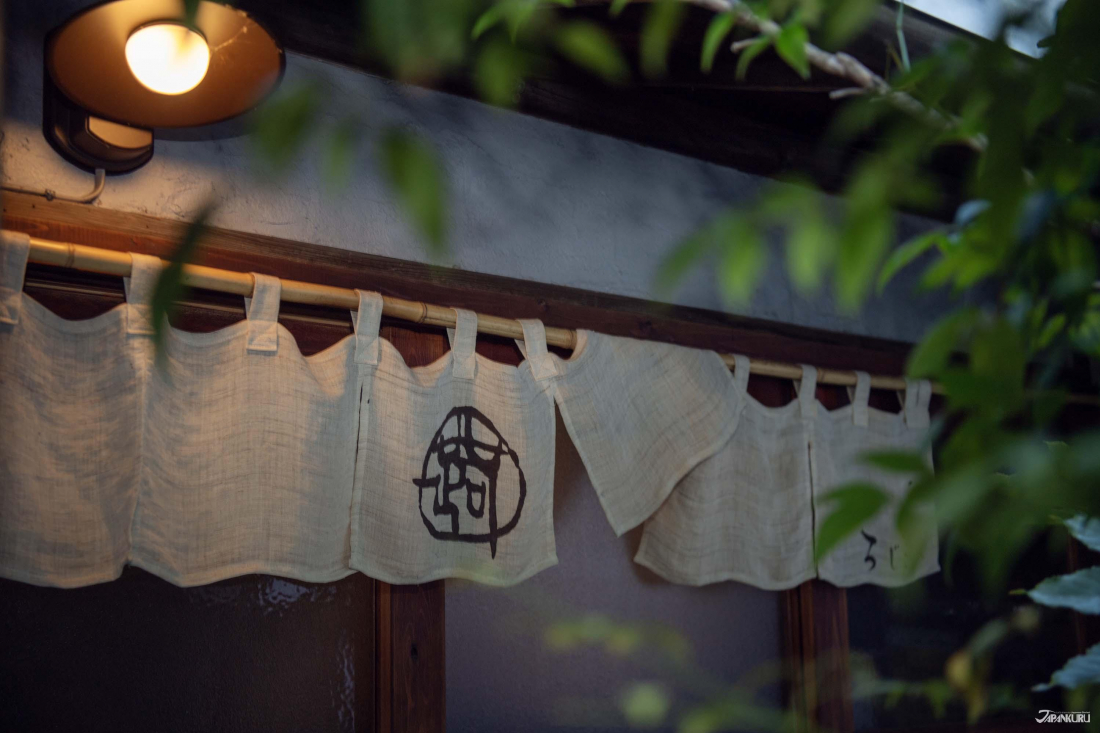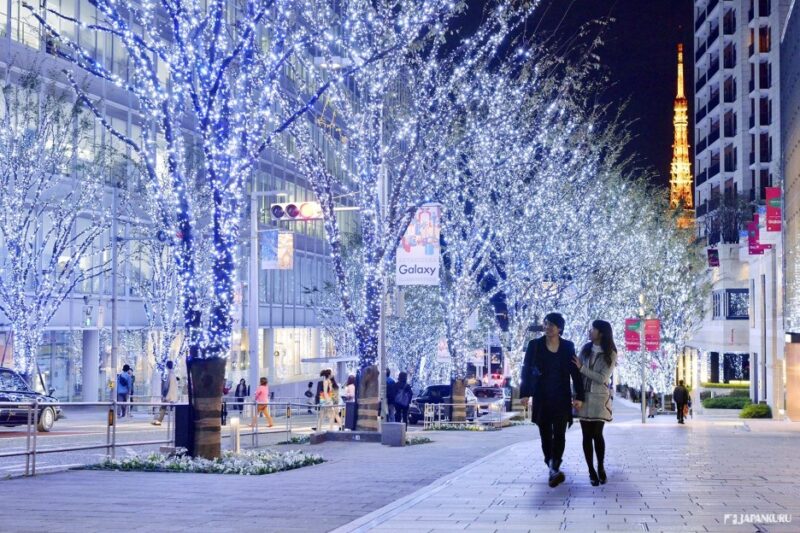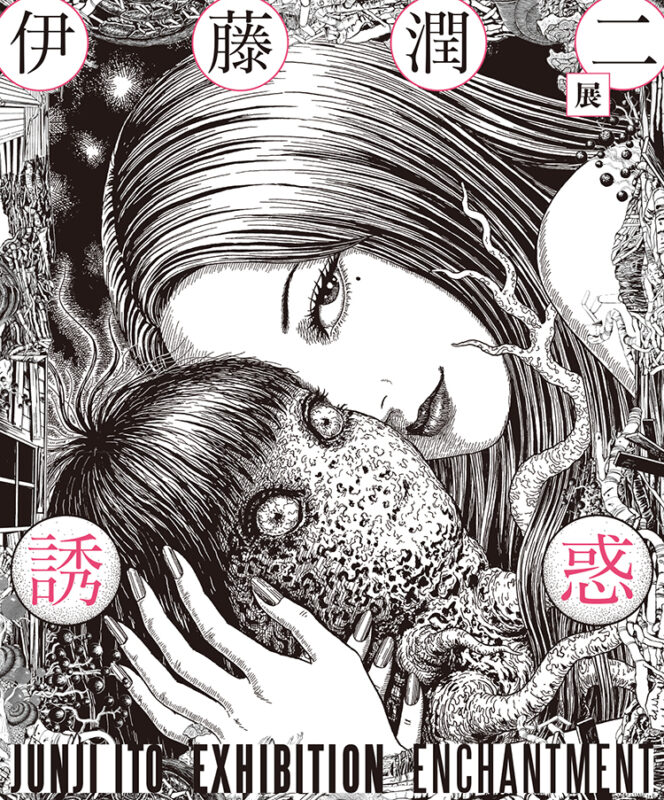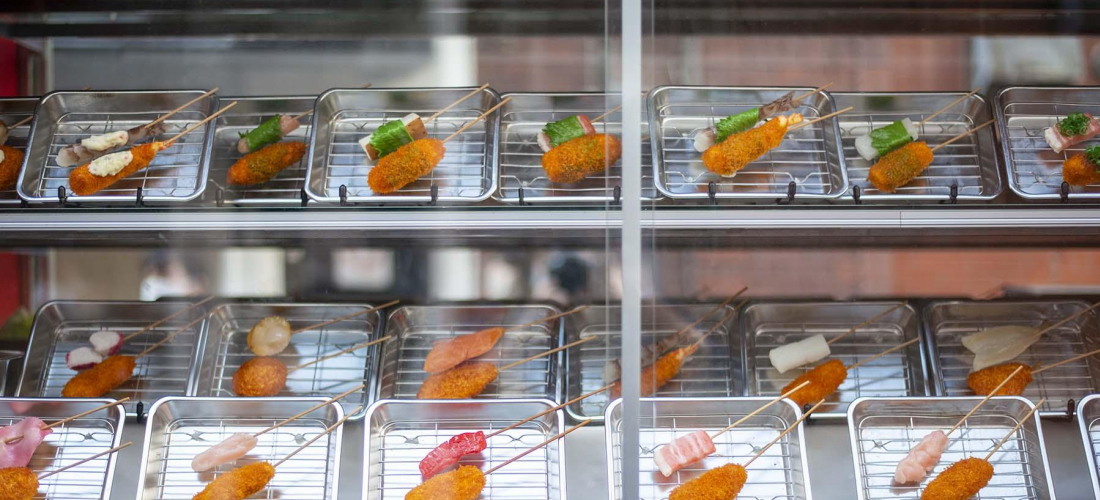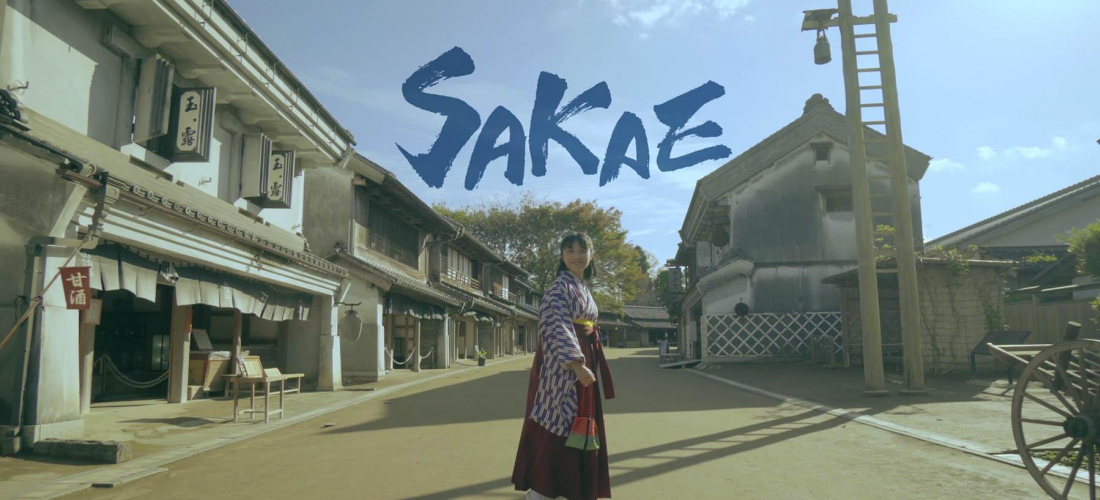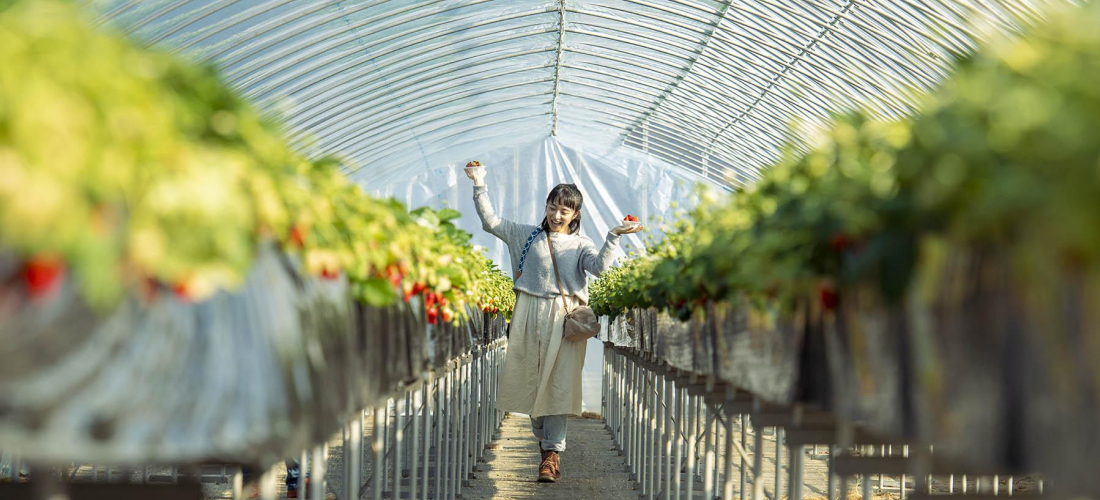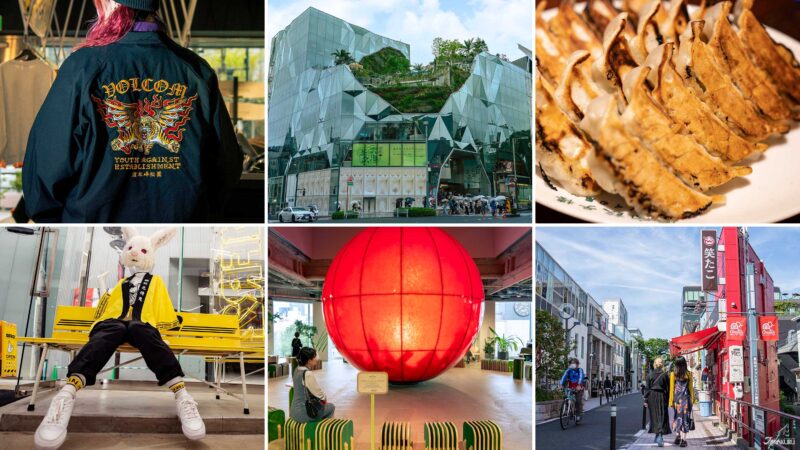
CONTENTS
This cafe and workshop space down an alley in Kitasenju is just 20 minutes from Asakusa, but it feels far from the busy streets of Tokyo. Stop in for a quiet cup of green tea, or a chance to learn traditional Japanese music, calligraphy, and more!
Experience the Real Tokyo at Rojicoya
With tourists pouring back into Japan post-pandemic, popular destinations are once again crowded with travelers hoping to glimpse just a little bit of traditional Japan and Japanese culture. Asakusa is busy day and night with visitors from around the world, dressing up in kimono to tour temples, or setting out on rickshaw rides. There's something exhilirating about joining a crowd of people who are all excited to experience the best Japan has to offer, but when squeezing through the crowds turns exhausting, and parts of the area start to seem a little too "touristy," it's time to leave Asakusa and hop on the train. Just 20 minutes from Asakusa is another spot where travelers can experience traditional Japanese culture, from the best green tea to the elegant tones of traditional Japanese music. Tucked away in the narrow alleys next to Kitasenju Station, Rojicoya is a little oasis of Japanese culture in the big city of Tokyo, so the Japankuru team decided to head over and see what they have to offer.
Tokyo’s Kitasenju Neighborhood
Kitasenju is 20 minutes or less from popular Tokyo spots like Ueno, Tokyo Skytree, Tokyo Station, and of course Asakusa, but the second you leave the station you can feel a friendly local atmosphere that's so rare to find in this bustling city. With streets that look straight out of a slice of life anime, Kitasenju doesn't have many major tourist attractions, but the neighborhood is full of little izakaya favored by locals, bathhouses beloved by multiple generations, and occasionally, traditional Japanese houses with old architecture still preserved amongst the shops and apartment buildings. In one of those, Rojicoya has taken over the beautiful space to offer guests a chance to experience Japanese tradition.
Traditional Japanese Culture at Rojicoya
Just a few minutes on foot from Kitasenju Station, Rojicoya is located inside a house built almost a century in the past, and you can feel the traditional atmosphere wash over you the moment you slip off your shoes and step up onto the smooth wooden floors of the main room. But the current operations are a newer project started by Yoshika Yonemoto, a former nurse with a deep love for traditional Japanese culture. As a nurse Yonemoto heard her patients expressing regrets, and when her children were very young, she decided that she wanted them to have a real understanding of their own traditions, so that they could feel rooted Japanese culture and have something to share with others around the world in the future. Yonemoto searched out real experts in their fields to teach her kids, and when others expressed interest in joining in, she realized there was real demand for access to these expert teachers, who often feel so far out of reach. Yoshika Yonemoto set out to share real Japanese culture with anyone who expressed an interest, and these days Rojicoya aims to offer the most authentic workshops possible to students of all kinds, including both Kitasenju locals and temporary visitors from all over the world.
It's easy to think that cultural classes taught by experts are only available via specialist institutions or rare connections, and only if you live in Japan long-term, but the classes and workshops at Rojicoya are accessible even for short-term tourists with an interest in Japanese culture. Classes are only taught by professionals in their field, and options are ever-expanding! Current classes include ikebana (flower arranging), samurai swordsmanship, calligraphy, and traditional Japanese instruments, and Yonemoto has ideas for even more in the future. With so many intriguing options, the Japankuru team had a hard time deciding which workshops to check out, but in the end we decided to try our hands at Japan's traditional musical instruments.
Rojicoya (路地裏寺子屋)
36-1 Senjuasahicho, Adachi City, Tokyo
Hours: hours vary from day to day, and workshops require reservations, so check the official calendar for details
Cafe Hours: 11:00 – 17:00 (Sundays only)
Official Website (en)
Shamisen and Koto Lessons From the Experts
The shamisen produces one of the most iconic sounds in traditional Japanese music, but it actually has roots in Chinese court music, and made its way into Japanese culture via the southern islands of Okinawa before it spread across Japan under the name "shamisen." The style of shamisen taught at Rojicoya is called "Tsugaru shamisen," and it originally comes from Aomori Prefecture, in the snowy northern reaches of Japan. Loud, cheerful, and especially percussive, the Tsugaru shamisen style originates from olden-day musicians who essentially earned their living through busking, and developed the especially strong shamisen style in order to be heard by people inside their houses, even when heavy snow dampened the sound.
Rojicoya's Tsugaru shamisen teacher is the professional shamisen expert Mayu Sugai, the youngest musician to rank 1st in Japan's National Tsugaru Shamisen Competition, and her shamisen lessons include a little bit of shamisen history, a little bit of demonstration, and a lot of hands-on time with the instrument. As a professional shamisen player, Sugai's performances look effortless, but she patiently helps new students find their way when struggling with the new instrument, so that everyone can finish the lesson by playing a song on their own. (The Japankuru team learned Twinkle, Twinkle Little Star!) Shamisen lesson might seem hard, but in just one session, you'll learn how to hold the instrument, how to pluck and push at the strings with the plectrum (like a huge guitar pick) called a "bachi" in Japanese, and even how to read simple shamisen music and play an easy song! Then again, if you want to see the difference between the most basic shamisen playing (what students learn) and what a real professional is capable of, Sugai might just accept a shamisen request or two!
▶︎ Rojicoya Shamisen Workshop
Upcoming Dates: Dec. 28, 2023 / Jan. 25, 2024 (find future dates on the official calendar)
Fee: 11,000 yen (including instrument rental and refreshments)
Time Required: approximately 1 hour
Reservation Page
Whether you've seen the long body of a koto before or not, the glimmering sound of this large stringed instrument will call to mind movie soundtracks set in Japan and around Asia, and at Rojicoya you can make it the soundtrack to your trip to Japan as well. Although it seems like the koto simply requires the player to pluck a few strings to make beautiful music, the reality is that (like every instrument) there are layers of skills and technique, and a skilled player's second hand is often busy adjusting the tension on each string as they go, shifting the many bridges or pushing down on the strings for a different sound.
Aoi Uyama, a graduate of Tokyo's University of the Arts and professional koto player, kneels in front of her koto to demonstrate and teach students at Rojicoya the history and techniques of the instrument, although like shamisen, this beginner lesson focuses on the basics. A koto has 13 strings, which can be modulated in any number of ways to achieve different sounds, but we learned to play our first song with just a few of the strings, and we all plucked away at our own practice kotos in order to perfect the simple melody by the end of the lesson. Sure, we were just learning how to play Twinkle, Twinkle Little Star again, but just by playing a song on the majestic koto, we all felt as elegant as court musicians from Japan's Heian period (784-1185).
▶︎ Rojicoya Koto Experience
Upcoming Dates: TBD (find future dates on the official calendar)
Time Required: approximately 1 hour
Samurai Culture, Calligraphy, and Other Workshops
On our visit to Rojicoya, the Japankuru team focused on learning traditional Japanese instruments, but Rojicoya's calendar is full of a variety of classes every month, so you can check to see what upcoming workshops and events might appeal to you (and fit in your shedule). Lessons conducted entirely in Japanese are marked with a JP, but others are offered entirely in English, so you don't have to speak Japanese to understand the finer points of the lesson. Calligraphy is a great one to try whether you can speak Japanese or not, but their rakugo (落語) events are focused on traditional Japanese comedic storytelling, which can be hard to enjoy if you don't speak Japanese!
According to Yonemoto, Rojicoya's "Bushido Samurai Experience" is probably their most popular traditional cultural workshop, thanks to the charismatic sword expert who teaches students how to handle a sword, swing it in a perfect cutting arc, and of course, how to embody the spirit of bushido. Students also get to dress up in kimono, for a little extra fun!
Green Tea Cafe Time on Sundays
In addition to a schedule packed with traditional classes and workshops, Rojicoya also opens the beautiful main room of their traditional old house to the public every Sunday as a Japanese green tea cafe. The menu includes a whole selection of different green teas, each with its own flavor profile to help you choose, and grown in some of Japan's most famous tea-farming regions (like Shizuoka and Fukuoka.) Perhaps the crowning jewel of Rojicoya's tea menu is their gyokuro tea, a green tea grown while specially covering the leaves to keep them from developing any astringency. The resulting drink is sometimes called "the espresso of tea," and it has a uniquely savory and full-bodied taste that somehow feels like the flavor of a dappled green forest canopy. Gyokuro leaves are often added to green tea blends with more common varieties, but according to Rojicoya's tea experts, this might be one of the only places in Tokyo where you can drink it pure! Of course, plain green tea isn't the only thing on the menu, there's also frothy matcha, and a few varieties of oolong or herbal tea from China too. To go with all the tea, they have a few sweets that toe the line between traditional and innovative. Try their sake ice cream, or order a dorayaki filled with cream cheese, honey, and cinnamon! Rojicoya's "kominka cafe" (cafe in a traditional Japanese house) is the perfect place to relax with a cup of tea and enjoy traditional Tokyo on a Sunday afternoon.
If you come to Rojicoya for a workshop, you also get a cup of tea and a chance to chat with your teacher after the lesson!
Rojicoya, the Heart of the Senju Art Village
Seen for so long as just another chunk of the urban landscape in the vast city of Tokyo, Kitasenju has seen a rush of new innovation and culture in recent years, with local projects aiming to bring life back to old abandoned buildings and bring people back to the area. By turning a lovely old house into a center for Japanese culture and international exchange, Rojicoya is now at the heart of a new "Senju Art Village" growing up all around it, where young creatives can find their platform, and everyone from locals to international travelers can find a wide range of art and culture. Tokyo has a lot to offer, but if you're looking for somewhere new that's a little off the beaten path (but still easily accessible), take a trip down the alleys of Kitasenju, and experience authentic Japanese culture at Rojicoya!
For more info and updates from Japan, check Japankuru for new articles, and don't forget to follow us on X (Twitter), Instagram, and Facebook!
COMMENT
FEATURED MEDIA
VIEW MORE 
A New Tokyo Animal Destination: Relax & Learn About the World’s Animals in Japan
#pr #japankuru #anitouch #anitouchtokyodome #capybara #capybaracafe #animalcafe #tokyotrip #japantrip #카피바라 #애니터치 #아이와가볼만한곳 #도쿄여행 #가족여행 #東京旅遊 #東京親子景點 #日本動物互動體驗 #水豚泡澡 #東京巨蛋城 #เที่ยวญี่ปุ่น2025 #ที่เที่ยวครอบครัว #สวนสัตว์ในร่ม #TokyoDomeCity #anitouchtokyodome

Shohei Ohtani Collab Developed Products & Other Japanese Drugstore Recommendations From Kowa
#pr #japankuru
#kowa #syncronkowa #japanshopping #preworkout #postworkout #tokyoshopping #japantrip #일본쇼핑 #일본이온음료 #오타니 #오타니쇼헤이 #코와 #興和 #日本必買 #日本旅遊 #運動補充能量 #運動飲品 #ช้อปปิ้งญี่ปุ่น #เครื่องดื่มออกกำลังกาย #นักกีฬา #ผลิตภัณฑ์ญี่ปุ่น #อาหารเสริมญี่ปุ่น

도쿄 근교 당일치기 여행 추천! 작은 에도라 불리는 ‘가와고에’
세이부 ‘가와고에 패스(디지털)’ 하나면 편리하게 이동 + 가성비까지 완벽하게! 필름카메라 감성 가득한 레트로 거리 길거리 먹방부터 귀여움 끝판왕 핫플&포토 스폿까지 총집합!
Looking for day trips from Tokyo? Try Kawagoe, AKA Little Edo!
Use the SEIBU KAWAGOE PASS (Digital) for easy, affordable transportation!
Check out the historic streets of Kawagoe for some great street food and plenty of picturesque retro photo ops.
#pr #japankuru #도쿄근교여행 #가와고에 #가와고에패스 #세이부패스 #기모노체험 #가와고에여행 #도쿄여행코스 #도쿄근교당일치기 #세이부가와고에패스
#tokyotrip #kawagoe #tokyodaytrip #seibukawagoepass #kimono #japantrip

Hirakata Park, Osaka: Enjoy the Classic Japanese Theme Park Experience!
#pr #japankuru #hirakatapark #amusementpark #japantrip #osakatrip #familytrip #rollercoaster #retrôvibes #枚方公園 #大阪旅遊 #關西私房景點 #日本親子旅行 #日本遊樂園 #木造雲霄飛車 #히라카타파크 #สวนสนุกฮิราคาตะพาร์ค

🍵Love Matcha? Upgrade Your Matcha Experience With Tsujiri!
・160년 전통 일본 말차 브랜드 츠지리에서 말차 덕후들이 픽한 인기템만 골라봤어요
・抹茶控的天堂!甜點、餅乾、飲品一次滿足,連伴手禮都幫你列好清單了
・ส่องมัทฉะสุดฮิต พร้อมพาเที่ยวร้านดังในอุจิ เกียวโต
#pr #japankuru #matcha #matchalover #uji #kyoto #japantrip #ujimatcha #matchalatte #matchasweets #tsujiri #말차 #말차덕후 #츠지리 #교토여행 #말차라떼 #辻利抹茶 #抹茶控 #日本抹茶 #宇治 #宇治抹茶 #日本伴手禮 #抹茶拿鐵 #抹茶甜點 #มัทฉะ #ของฝากญี่ปุ่น #ชาเขียวญี่ปุ่น #ซึจิริ #เกียวโต

・What Is Nenaito? And How Does This Sleep Care Supplement Work?
・你的睡眠保健品——認識「睡眠茶氨酸錠」
・수면 케어 서플리먼트 ‘네나이토’란?
・ผลิตภัณฑ์เสริมอาหารดูแลการนอน “Nenaito(ネナイト)” คืออะไร?
#pr #japankuru #sleepcare #japanshopping #nenaito #sleepsupplement #asahi #睡眠茶氨酸錠 #睡眠保健 #朝日 #l茶胺酸 #日本藥妝 #日本必買 #일본쇼핑 #수면 #건강하자 #네나이토 #일본영양제 #อาหารเสริมญี่ปุ่น #ช้อปปิ้งญี่ปุ่น #ร้านขายยาญี่ปุ่น #ดูแลตัวเองก่อนนอน #อาซาฮิ

Japanese Drugstore Must-Buys! Essential Items from Hisamitsu® Pharmaceutical
#PR #japankuru #hisamitsu #salonpas #feitas #hisamitsupharmaceutical #japanshopping #tokyoshopping #traveltips #japanhaul #japantrip #japantravel

Whether you grew up with Dragon Ball or you just fell in love with Dragon Ball DAIMA, you'll like the newest JINS collab. Shop this limited-edition Dragon Ball accessory collection to find some of the best Dragon Ball merchandise in Japan!
>> Find out more at Japankuru.com! (link in bio)
#japankuru #dragonball #dragonballdaima #animecollab #japanshopping #jins #japaneseglasses #japantravel #animemerch #pr

This month, Japankuru teamed up with @official_korekoko to invite three influencers (originally from Thailand, China, and Taiwan) on a trip to Yokohama. Check out the article (in Chinese) on Japankuru.com for all of their travel tips and photography hints - and look forward to more cool collaborations coming soon!
【橫濱夜散策 x 教你怎麼拍出網美照 📸✨】
每次來日本玩,是不是都會先找旅日網紅的推薦清單?
這次,我們邀請擁有日本豐富旅遊經驗的🇹🇭泰國、🇨🇳中國、🇹🇼台灣網紅,帶你走進夜晚的橫濱!從玩樂路線到拍照技巧,教你怎麼拍出最美的夜景照。那些熟悉的景點,換個視角說不定會有新發現~快跟他們一起出發吧!
#japankuru #橫濱紅磚倉庫 #汽車道 #中華街 #yokohama #japankuru #橫濱紅磚倉庫 #汽車道 #中華街 #yokohama #yokohamaredbrickwarehouse #yokohamachinatown

If you’re a fan of Vivienne Westwood's Japanese designs, and you’re looking forward to shopping in Harajuku this summer, we’ve got important news for you. Vivienne Westwood RED LABEL Laforet Harajuku is now closed for renovations - but the grand reopening is scheduled for July!
>> Find out more at Japankuru.com! (link in bio)
#japankuru #viviennewestwood #harajuku #omotesando #viviennewestwoodredlabel #viviennewestwoodjapan #비비안웨스트우드 #오모테산도 #하라주쿠 #日本購物 #薇薇安魏斯伍德 #日本時尚 #原宿 #表參道 #japantrip #japanshopping #pr

Ready to see TeamLab in Kyoto!? At TeamLab Biovortex Kyoto, the collective is taking their acclaimed immersive art and bringing it to Japan's ancient capital. We can't wait to see it for ourselves this autumn!
>> Find out more at Japankuru.com! (link in bio)
#japankuru #teamlab #teamlabbiovortex #kyoto #kyototrip #japantravel #artnews
Photos courtesy of teamLab, Exhibition view of teamLab Biovortex Kyoto, 2025, Kyoto ® teamLab, courtesy Pace Gallery

Japanese Makeup Shopping • A Trip to Kamakura & Enoshima With Canmake’s Cool-Toned Summer Makeup
#pr #canmake #enoshima #enoden #에노시마 #캔메이크 #japanesemakeup #japanesecosmetics

⚔️The Robot Restaurant is gone, but the Samurai Restaurant is here to take its place. Check it out, and don't forget your coupon!
🍣신주쿠의 명소 로봇 레스토랑이 사무라이 레스토랑으로 부활! 절찬 쿠폰 발급중
💃18歲以上才能入場的歌舞秀,和你想的不一樣!拿好優惠券去看看~
#tokyo #shinjuku #samurairestaurant #robotrestaurant #tokyotrip #도쿄여행 #신주쿠 #사무라이레스토랑 #이색체험 #할인이벤트 #歌舞伎町 #東京景點 #武士餐廳 #日本表演 #日本文化體驗 #japankuru #japantrip #japantravel #japanlovers #japan_of_insta

Japanese appliance & electronics shopping with our KOJIMA x BicCamera coupon!
用JAPANKURU的KOJIMA x BicCamera優惠券買這些正好❤️
코지마 x 빅 카메라 쿠폰으로 일본 가전 제품 쇼핑하기
#pr #japankuru #japanshopping #kojima #biccamera #japaneseskincare #yaman #dji #osmopocket3 #skincaredevice #日本購物 #美容儀 #相機 #雅萌 #日本家電 #일본여행 #면세 #여행꿀팁 #일본쇼핑리스트 #쿠폰 #일본쇼핑 #일본브랜드 #할인 #코지마 #빅카메라 #japankurucoupon

